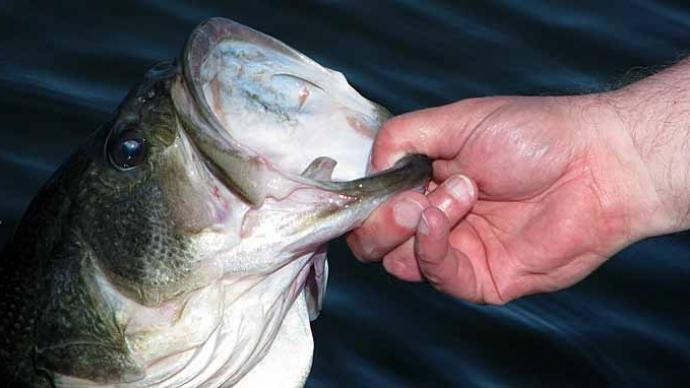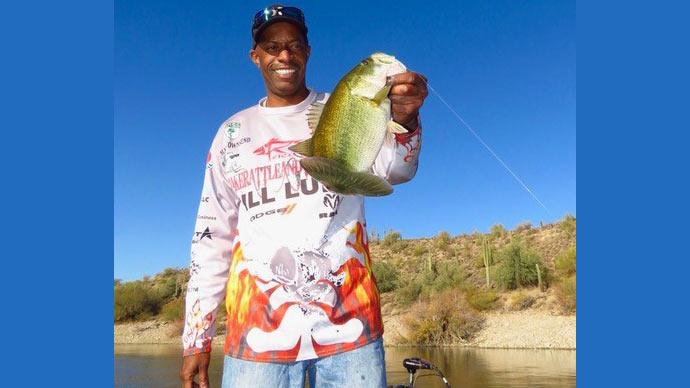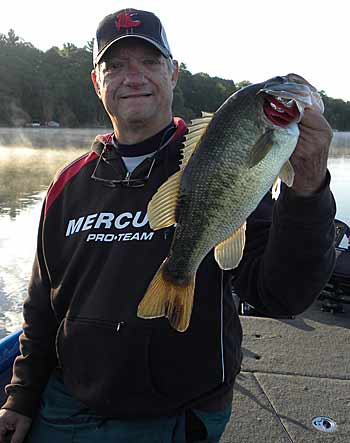
During the cold-water months, bass are known to follow food sources. This could be holding on river bends in the main river channels in a deep reservoir down South. Or it could be holding on an outside deep weedline surrounded by a hard bottom area in the upper part of the country. Wherever your situation, bass need to follow food sources all season long to survive. What is your go-to bait when dealing with deep water bass in colder water situations?
Some would say they would turn towards crankbaits to get the bass to bite.
The reality is you will have a hard time getting bass to commit to a faster-moving bait in cold water conditions. I feel that a crankbait may trigger some bites along the way, but they would probably be few and far between. You can't slow your crankbait down enough to make it work well to trigger many bites.
Another choice would be a football jig. This is a good choice as you can slow your presentation down and keep the bait in the bass zone longer, often triggering bites along the way.
You can better pick the high percentage areas apart with a football jig by keeping your bait in the strike zone longer to trigger bites. This will excel if you have bass chasing craws at this time of the season, but in some cases, crawfish could be a little bit too early. This will mainly depend on your location.
One of my best cold water presentations is a Carolina Rig at this time of the season. When you have bass in cold water conditions that won't chase a bait far, there is no better way to trigger bites than a bait that stays in the strike zone for an extended amount of time and looks natural. This is a vital mix for triggering bites and getting bass in your boat.
Over the years, Pete Thliveros has probably been the biggest named pro to do the most damage with a Carolina rig. He had a knack of pulling a rig out and hunkering down in an area to milk it for all its worth. I got to witness one time just how good he was at fishing a Carolina rig. In 1995, the BASS Top 100 came to Lake Minnetonka, and Peter T was parked on a rock spot in Wayzata bay on Day 1 of the tournament working the bass over in the process with a Carolina rig. He stayed on this spot most of the day and worked his Carolina rig to perfection.
C-Rig Breakdown
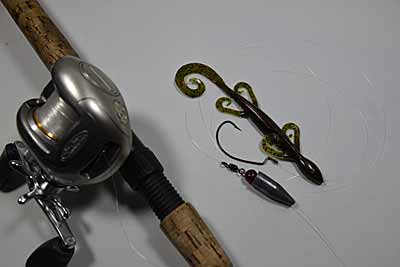
When fishing a Carolina rig, you must pay attention to a few things when getting everything together. When it comes to rods, you have a few different choices. Some prefer a 7ft MH baitcaster; I prefer a 7’4” to 7’6” MH rod. I like a longer rod for two reasons. Number one is faster line pick-up. It's easier to pick up more line with a longer rod when it comes time to set the hook. The other reason is it's easier to cast heavier weights usually used when Carolina rig fishing.
Reel choice will be left up to your preference. Some fishermen prefer a faster ratio reel speed. I mainly fish a 6.8:1 speed reel. I want to pick up a line at a reasonable rate, but I don't need a burner speed reel. I use 15lb Sunline Assassin FC for my mainline. The limited stretch of the Assassin FC allows me to feel everything that my bait is doing as it's moving across the bottom.
I use 12lb Sunline Super Natural monofilament line choice for my leader line. This is where many of today’s anglers aren't paying close enough attention to what is happening with their C-rigs.
You may not have thought of this much, but many of us use different mainlines when fishing today’s Carolina rig. We were all using straight mono in the past as this was the only line. With today’s line choices, many of us are now using a fluorocarbon line because of the limited line stretch and better sensitivity and using fluorocarbon leader instead of mono. Yes, this can work. Fluorocarbon leader sinks, keeping your bait closer to the bottom.
But when we were all using a monofilament leader, the characteristic of mono is that it floats. In past years, your weightless bait was up off the bottom, having a more natural as the bait trails the sinker. This plays a big part in triggering bites from following bass.
If your catch rates have been going down lately, this very well could be the biggest reason why. Your bait is below the bass instead of up above the bass, where it can get noticed and eaten. This is a significant point to pay attention to, so make sure you use a monofilament leader instead of fluorocarbon.
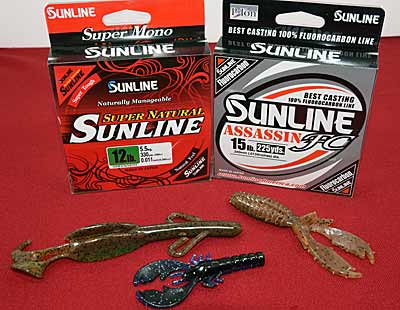
When it comes to leader lengths, pay attention to the water conditions you're fishing in. I'll lengthen my leader length to be 3ft to 5ft in clear water conditions. In stained/dirty water conditions, I'll shorten up my leader length. I want my bait closer to the sinker so the bass can find it. The farther I move away from the sinker, the more difficulty bass will have to find the trailing bait. In these conditions, I'll fish a leader 1ft to 2ft in length.
There are a few more points when it comes to sinkers; for years, we have all used lead sinkers. But with the added feel that you get from tungsten sinkers, some bass anglers have started to use tungsten weights for their Carolina rigs. I have stayed with lead because of the 1oz tungsten sinker costs. In some cases, you're close to paying $8.00 for a single tungsten 1oz sinker. I have turned towards another option. I'm using Bullet Weights Steel Sinkers. It's physically a little bit bigger than lead, but it gives me a lot better feeling than the lead at a fraction of the cost of tungsten.
Now that we have made our notes on setting up your Carolina rigs, I put it all together. I'll take and put my sinker choice on the line on my mainline. Follow that with a plastic or glass bead (your choice). Then I'll tie on my barrel swivel. For now, I'm done with my mainline.
I'll tie my hook choice to one end on my leader line. I generally match my hook size and type to the bait I'm fishing. I use a Gamakatsu 3/0 to 4/0 EWG or G Lock worm hook.
Next, I'll tie my leader line to the open end of the barrel swivel. I tie my Carolina rig in this order because I can use polymer knots at each tie point, resulting in a more robust, more reliable C-rig setup.
Bait Choices
Bait choices to put on your hook will have a lot to pick from. My number one choice is a Berkley Power Bait Lizard in 4” or 6”. I adjust the size of the lizard to the bite conditions that I'm faced that day. I always start with a 6” lizard. If the bite is good, I'll keep using a 6” lizard, but I will go down to a 4” lizard if it's hard to get bites. The lizard has been one of the best baits I have used through the years.
Craws, creatures, and tubes are other baits to consider when searching for bass and bites. Try to match your bait choice to the water condition you're fishing in. One note to make, if you're fishing in colder water conditions, the number of craws may not be as prevalent as some of the other forage choices in your waters during the cold water periods. Craws don't hibernate but become more dormant in colder water conditions. At these times, craws may not be too high on the bass radar.
Fishing Options
When it comes to Carolina rig fishing, many times in cold water conditions, you can't go slow enough, so pay attention to the speed you're fishing. The slower, the better. This is the biggest reason the Carolina rig is a success throughout the season. The bait follows when the C-rig comes through the rocks creating a ruckus. This is what the bass can't resist biting.
I hope this gives you a new viable option to fish when the bite gets extra tough in cold water conditions. Don't put the Carolina rig down when the water gets warmer either keep a C-rig on your boat deck all season long. This is a bass presentation that will work all months of the season.


